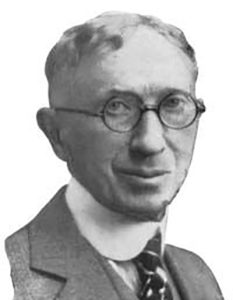PAS Hall of Fame:
John Calhoun Deagan
(b. November 6, 1853 - d. April 28, 1934)
by James A. Strain

One of the most recognizable names in the field of mallet percussion is the namesake of the J. C. Deagan Company, John Calhoun Deagan. Trained as a concert clarinetist, Deagan’s dissatisfaction with the intonation of the glockenspiels used in theater orchestras with which he performed led him to experiment with the acoustics and tuning of the instrument. As a result of these experiments and his study of the German physicist Hermann Helmholtz’s doctrine on acoustics, On the Sensations of Tone as a Physiological Basis for the Theory of Music (1862), Deagan developed the first scientifically tuned glockenspiel. This was the beginning of a career that has affected every musician and percussionist for the past 120 years.
Few people survive who actually knew Deagan, who passed away over 65 years ago, and over the years a bit of mystery and legend has developed regarding his abilities and achievements, resulting in a somewhat elusive pursuit of this most-influential musician. One person who knew him intimately is his granddaughter, Jayne Deagan Evans, who was sent to live with her grandparents during her high school years.
“My grandfather was a shy and most private intellectual,” Evans recalls. “He was a gracious and loving person who excitingly shared his love of music, astronomy, and the sciences with anyone who also showed an interest in these areas. I’m sure that, were he still alive, he would humbly accept the [PAS Hall of Fame] award in the belief that he had, perhaps, contributed something of value to the world of music.”
Deagan did indeed make significant contributions to the world of music, many of which are directly related to percussion. The mere mention of a vintage Deagan “Round-top” glockenspiel or “Artist’s Special” xylophone for sale continues to bring an immediate rise in pulse to those who perform on or collect these valued instruments.
Highlights of Deagan’s career
* Nationally recognized performer on clarinet.
* Member of the United States Navy, which allowed him to study music and attend lectures by H. Helmholtz in London, arousing his curiosity about acoustics.
* Created the first scientifically tuned glockenspiel, beginning manufacture in 1880.
* Researched and selected the most satisfactory wood (Honduras Rosewood) for use in xylophones and marimbas. This is still regarded as the preferred wood for these instruments.
* Developed numerous musical instruments, including the xylophone, organ chimes, aluminum chimes, aluminum harp, Swiss handbells, marimba, marimbaphone, vibraharp, drawn tubular cathedral chimes, dinner chimes, tubular bell carillon, pipe-laphone, and electrically amplified una-fon.
* Charter member of the American Federation of Musicians.
* In 1910, persuaded the American Federation of Musicians to adopt A=440 as the standard universal pitch for orchestras and bands.
* Provided the U.S. Bureau of Standards with a set of tuning forks providing accurate measurements of 100 to 2,000 vibrations per second for use in radio research.
* Invented the Deagan-o-meter, the first tuning mechanism for band and orchestra instruments (serving the same purpose that a Stroboconn or electronic tuner does today).
* By 1912 had constructed the Deagan building in Chicago, which was advertised at that time as the largest manufacturing facility for musical instruments in the world.
* Authored numerous articles and publications, among them two books: Fundamentals in Tone Production, Good and Bad Quality of Musical Tones Proved by Mathematics (1916), which illustrates tuning principles for cathedral chimes, and Fundamentals in Pitch and Tuning Musical Instruments (1916), which illustrates his functioning Deagan-o-meter.
* Composed music for his percussion instruments, including two collections entitled Deagan Musical Dinner Chime Music and Deagan Military Chime Music (1916).
* Commissioned and inspired many musical pieces for his percussion instruments by name composers and arrangers such as Henri Klickmann and Clair O. Musser, including a work titled “In a Nutshell, Suite for Orchestra, Piano, and Deagan Percussion Instruments” by Percy Grainger.
* Received dozens of patents for musical tuning, manufacturing processes, and construction of his musical instruments.
The following is J.C. Deagan’s entry in The National Cyclopedia of American Biography (vol. 43, 1961), with additional comments appearing in brackets.
DEAGAN, John Calhoun, musician and manufacturer, was born in Hector, N.Y., Nov. 6, 1853, son of Michael and Mary (Meagher) Deagan, both natives of Ireland. He attended public schools in Youngstown, Ohio, and Raines College, and in 1871 enlisted in the U.S. Navy. While his ship, the USS “Brooklyn,” was in English waters he studied music at the University of London.
A series of lectures in London by Hermann von Helmholtz, German physicist, aroused his interest in the science of sound, and later, while serving musical engagements in various parts of the United States, he conducted experiments, which resulted in many contributions to the scope and permanent enrichment of instrumental music. His first product was an improvement upon the crude glockenspiel, which as a German importation had appeared in one or two American orchestras. He succeeded in transforming the rough pieces of metal into a set of perfectly tuned bells, which soon became standard orchestra equipment. Deagan began to manufacture these bells in 1880.
Later he developed many other musical instruments, including the xylophone, organ chimes, aluminum chimes, aluminum harp, Swiss handbells, and orchestra bells. The marimba he developed from a novelty from the jungle into an accepted musical instrument. He evolved the original marimbaphone with metal into the vibraharp, the drawn tubular cathedral chime for pipe organ and orchestra use, and the steel bar celeste and wood bar harp for pipe organ use. In 1910 he developed the dinner chime. Another of his products was a radical improvement in carillons for churches and public buildings, consisting of massive tubular bells, equipped with dampers to eliminate tone intermingling, controlled electrically, and playable both manually from keyboard and automatically from perforated paper rolls, under clock control.
Beginning in 1898 he gave his entire time to the manufacture of the instruments he had invented. Starting as a one-man operation in St. Louis, Mo. [1004 Market Street], he moved to San Francisco, Calif. [1893], and finally to Chicago, Ill. [1897]. [The company existed at several addresses, including 358 North Dearborn Street, 2419 Wabash Avenue, 2157 North Clark Street at Grace Street, and finally at the corner of Berteau and East Ravenswood Avenues.] The business was incorporated in 1913 as J. C. Deagan Musical Bells, Inc. Three years later [April 14, 1916] the name was changed to J. C. Deagan, Inc. He was president of the corporation from its inception until the close of his life.
In 1910 Deagan persuaded the American Federation of Musicians, at its annual convention, to adopt A=440 as the standard universal pitch for orchestras and bands, thus settling a question, which had long agitated musical circles. It was also accepted by the United States government and generally throughout the world. In 1914, at the request of the U.S. Bureau of Standards, he supplied it with a set of tuning forks, for radio research and other purposes, giving accurate pitch intervals from 100 to 2,000 vibrations per second. A year later he perfected the so-called Deagan-o-meter, a device for accurately demonstrating musical pitch simultaneously both by ear and eye.
Another important part of his work on pitch was the compilation in 1915 of a musical chart, which has been used by musicians, and teachers of music throughout the world. A much more extensive work of the same kind was nearing completion at the time of his death and was posthumously published. He was the author of numerous articles for musical journals. For some years he belonged to the board of curators of the Field Museum in Chicago.
Deagan was a charter member of the American Federation of Musicians and a member of the American Association for the Advancement of Science, American Physical Society, American Acoustical Society, Astronomical Society of the Pacific, and the J.C. Deagan Astronomical Society (named in his honor), of Riverside, Calif. He was deeply interested in astronomy, geology, chemistry, and all branches of physics, particularly the theories of light and sound, and he was considered an authority on pitch and acoustics.
In his leisure time he read widely and enjoyed travelling to many parts of the world. Politically he was an independent. Deagan was married in Belleville, Ill., Nov. 20, 1884, to Sophia Katherine, daughter of Frederick Funcke of that place, a cabinet-maker, and had four children: Jefferson Claude; Frederick Waldo; Michael Roy (died in infancy); and Marion Vita, who married Richard Joseph Welch. Deagan died in Hermosa Beach, Calif., Apr. 28, 1934.
Following J.C. Deagan’s death, the company continued to thrive under the leadership of first his daughter-in-law (Ella Smith Deagan, wife of Jefferson Claude Deagan), then her son, “Jack” Deagan, and daughter, Jayne Deagan Evans. In 1978, the company was purchased by the Slingerland Company, and then sold to Larry and Sandra Rasp (Sanlar Corporation) in 1984. Today, Deagan glockenspiels and chimes are marketed by the Yamaha Corporation based on the trademark and patented designs of the “Grand Old Man” of musical percussion instruments. Deagan tower bells and chimes continue to ring throughout the world as an enduring tribute to the genius, inventiveness, and musical contributions of John Calhoun Deagan.









